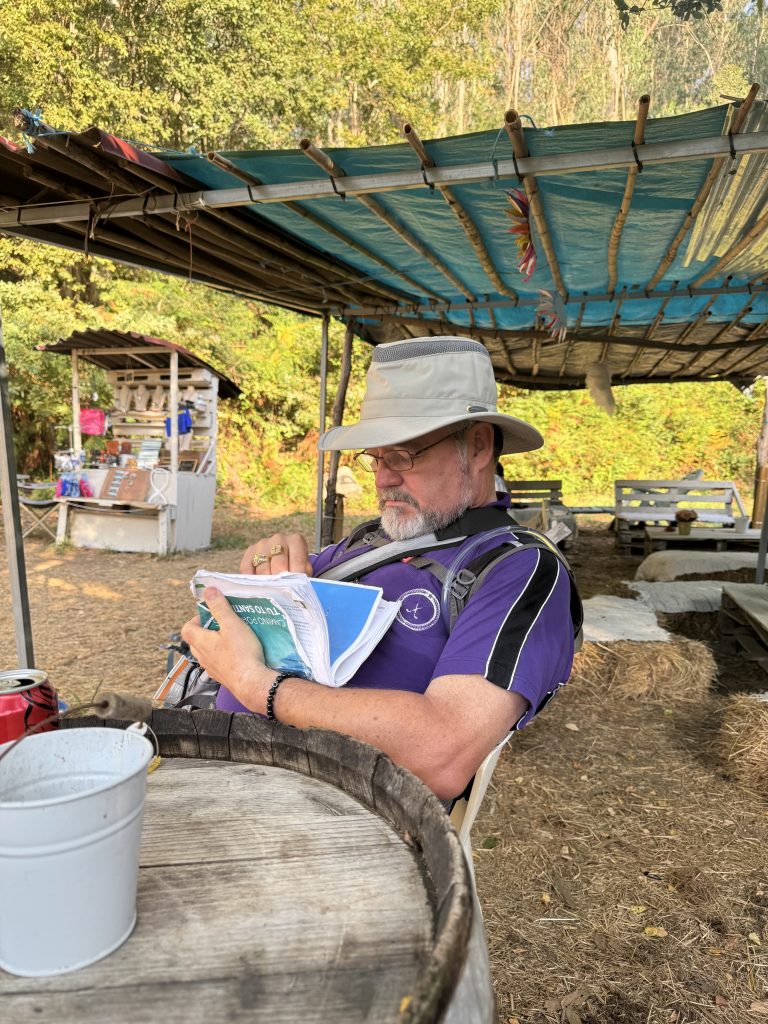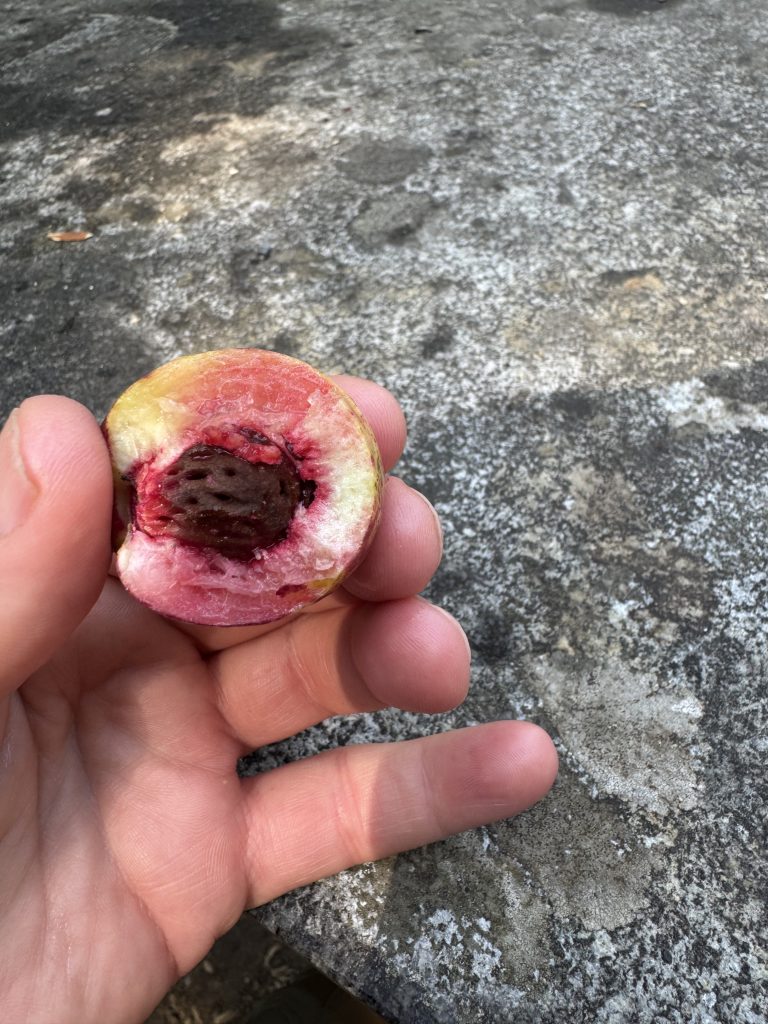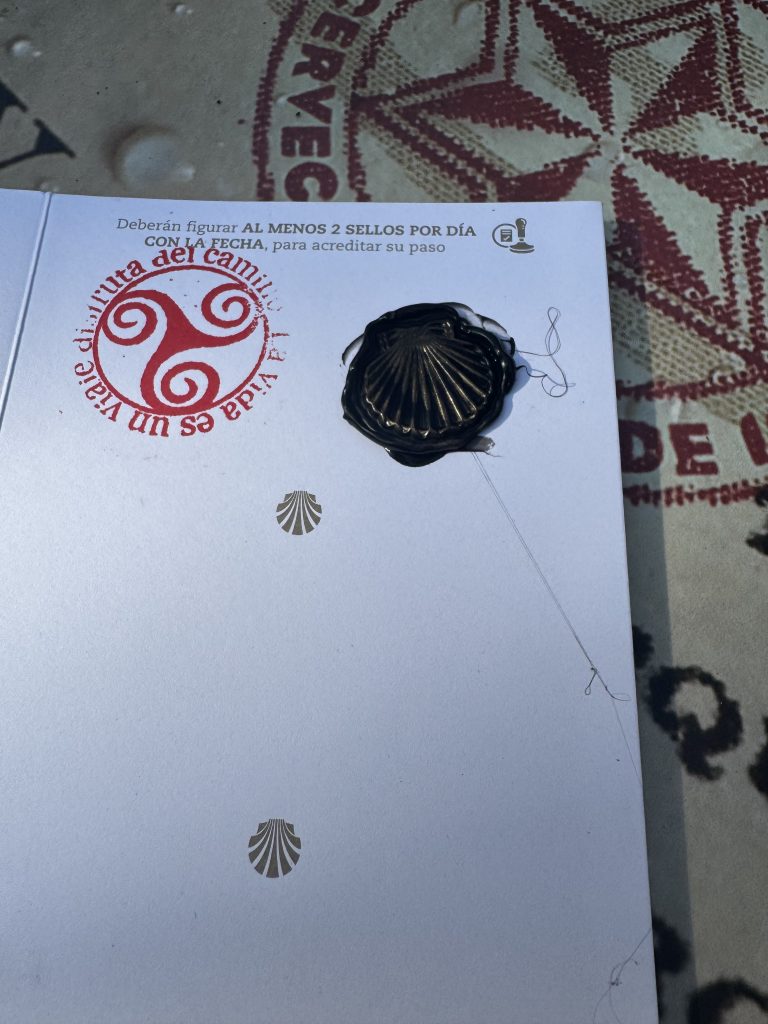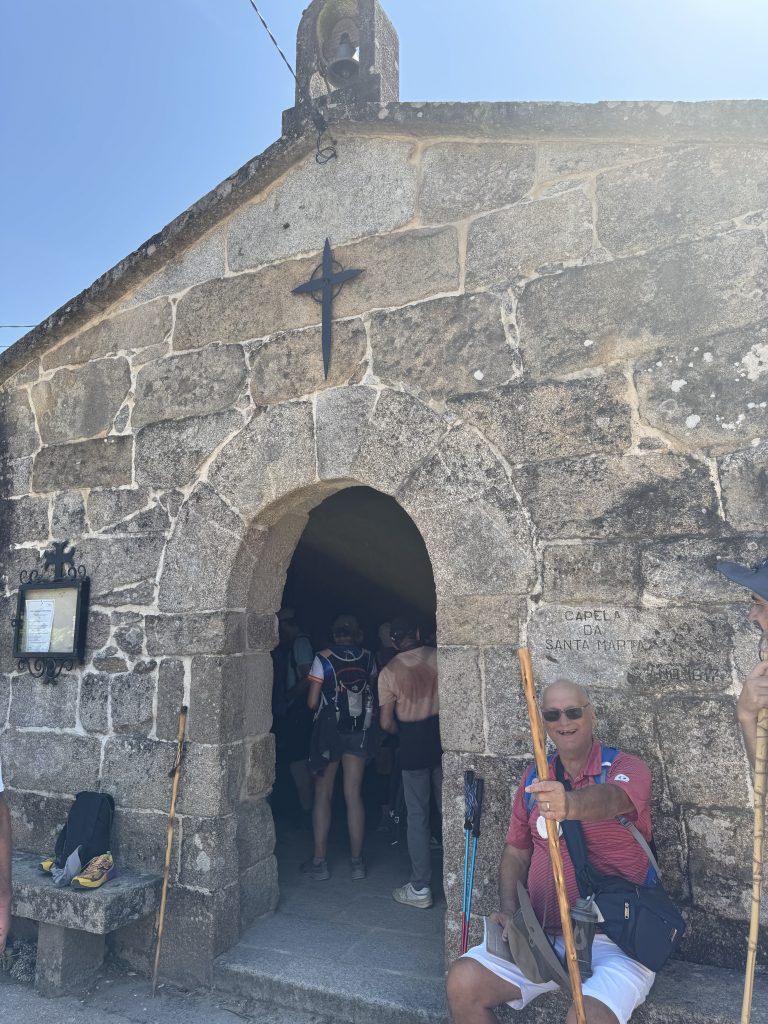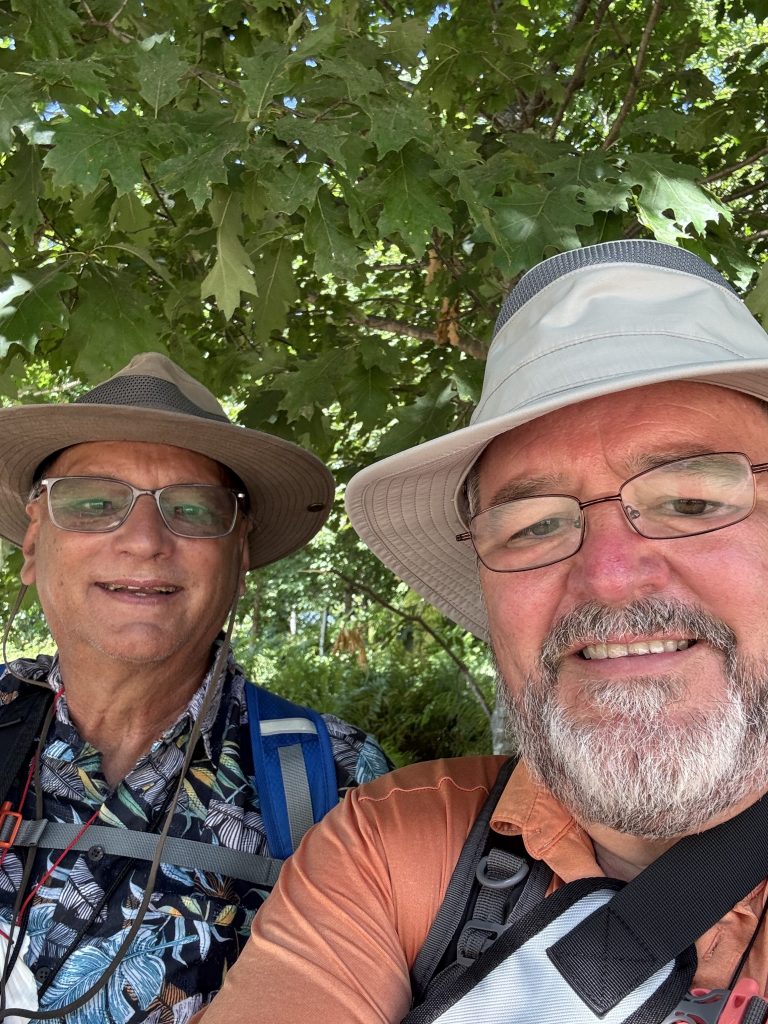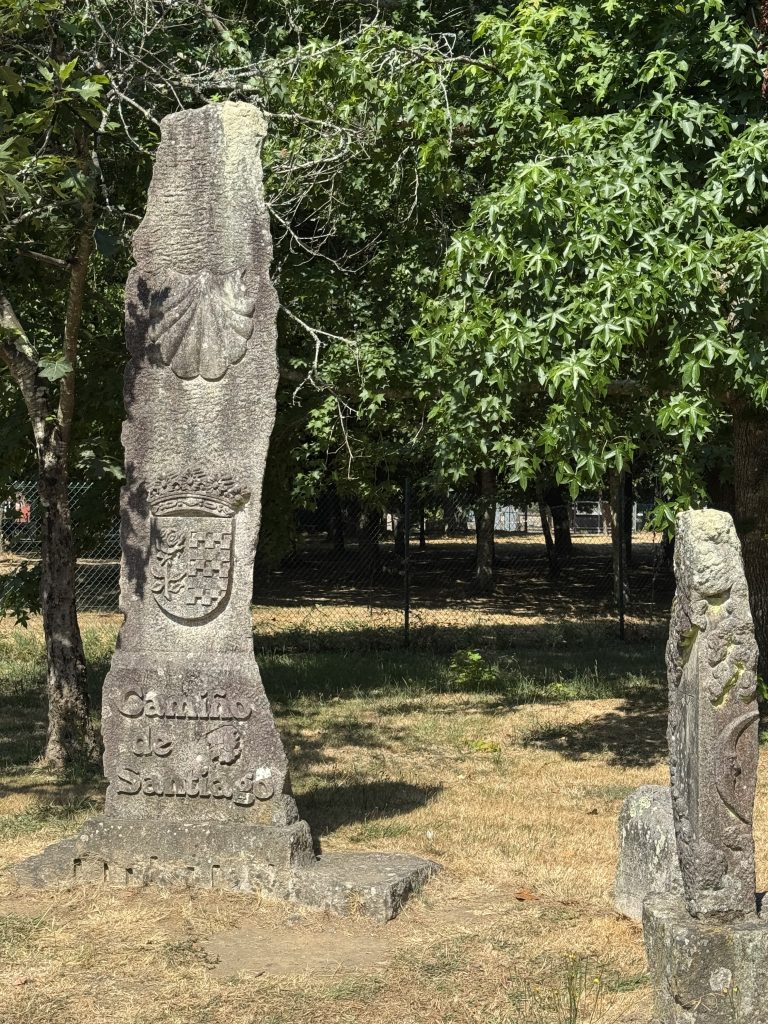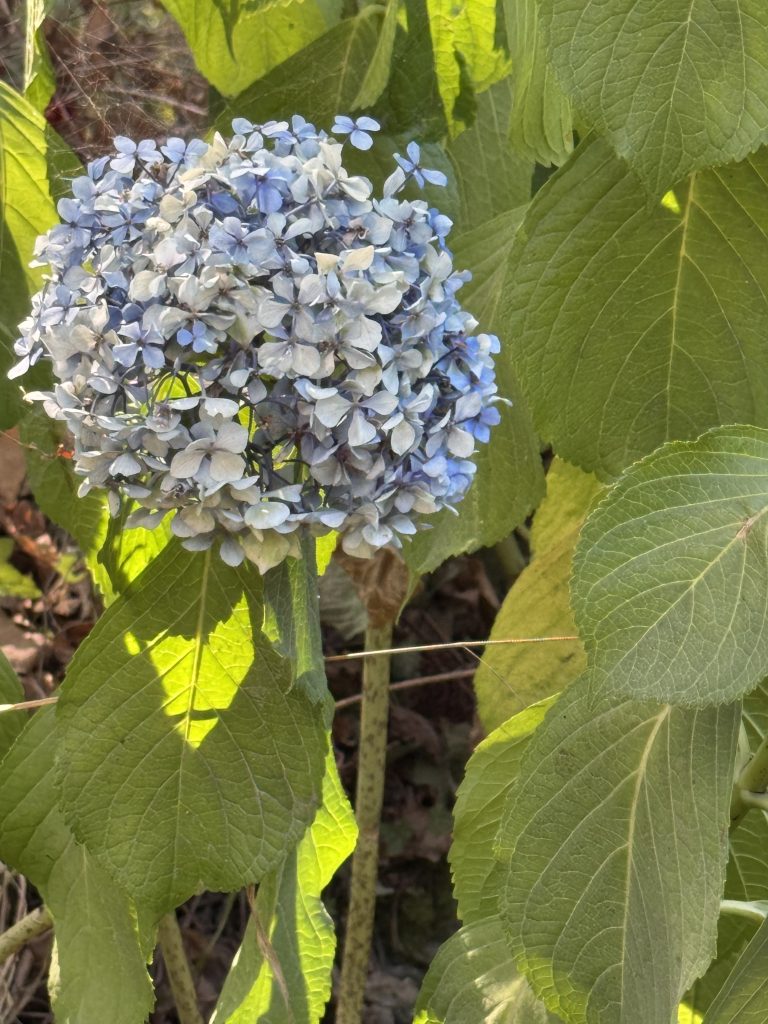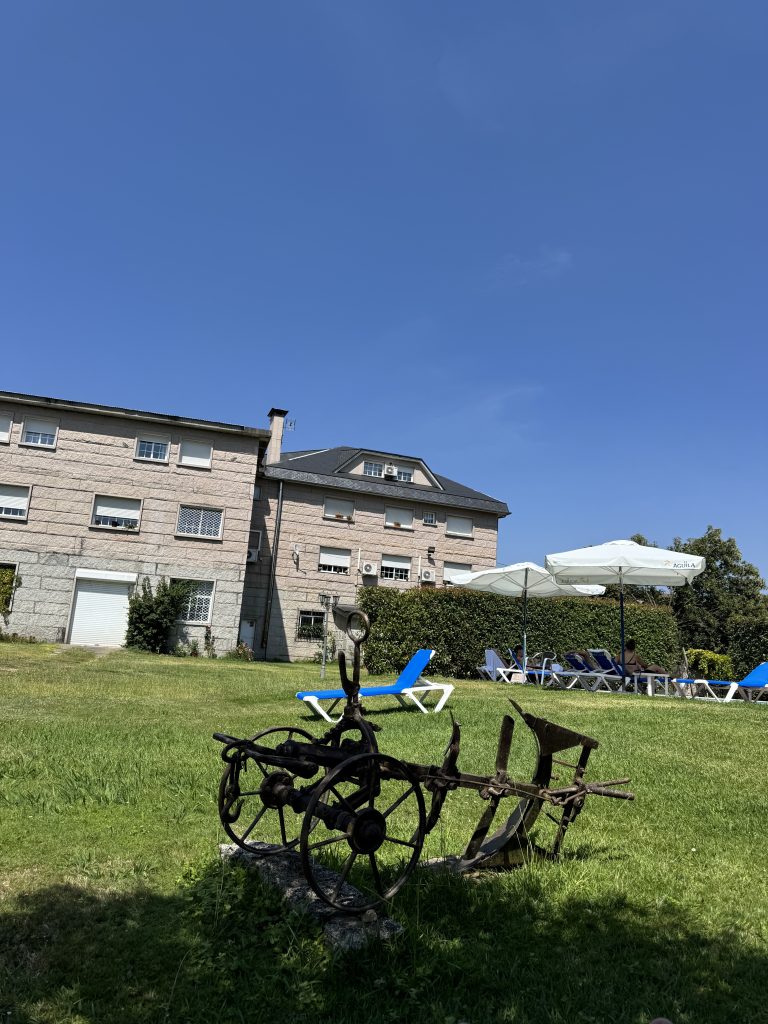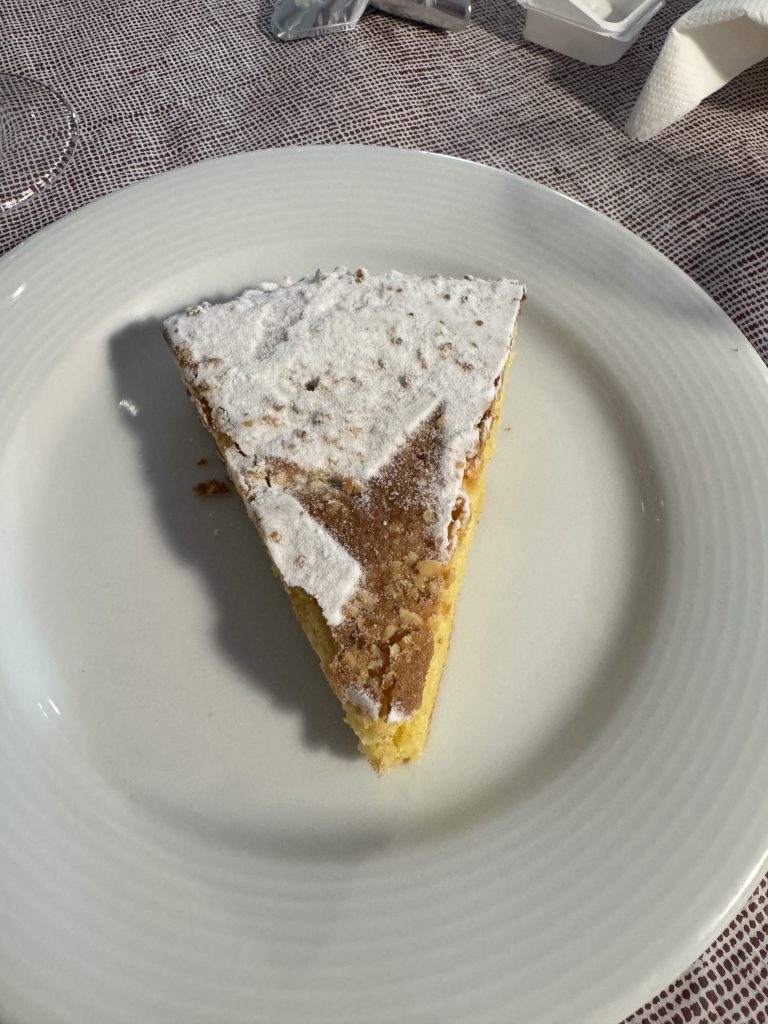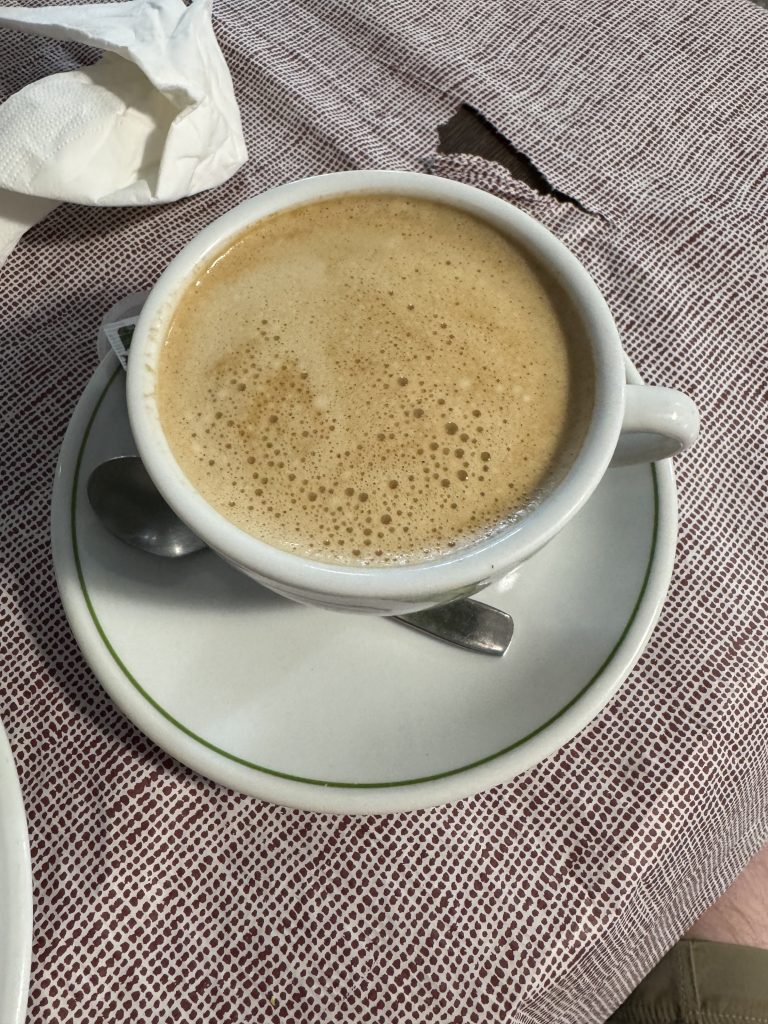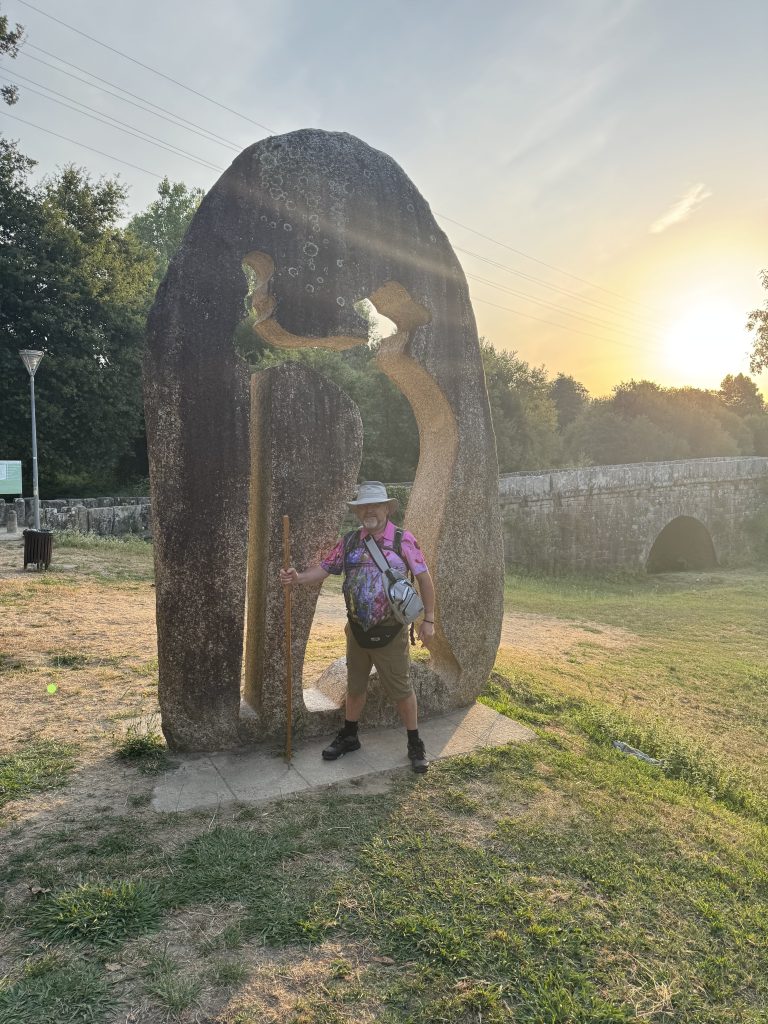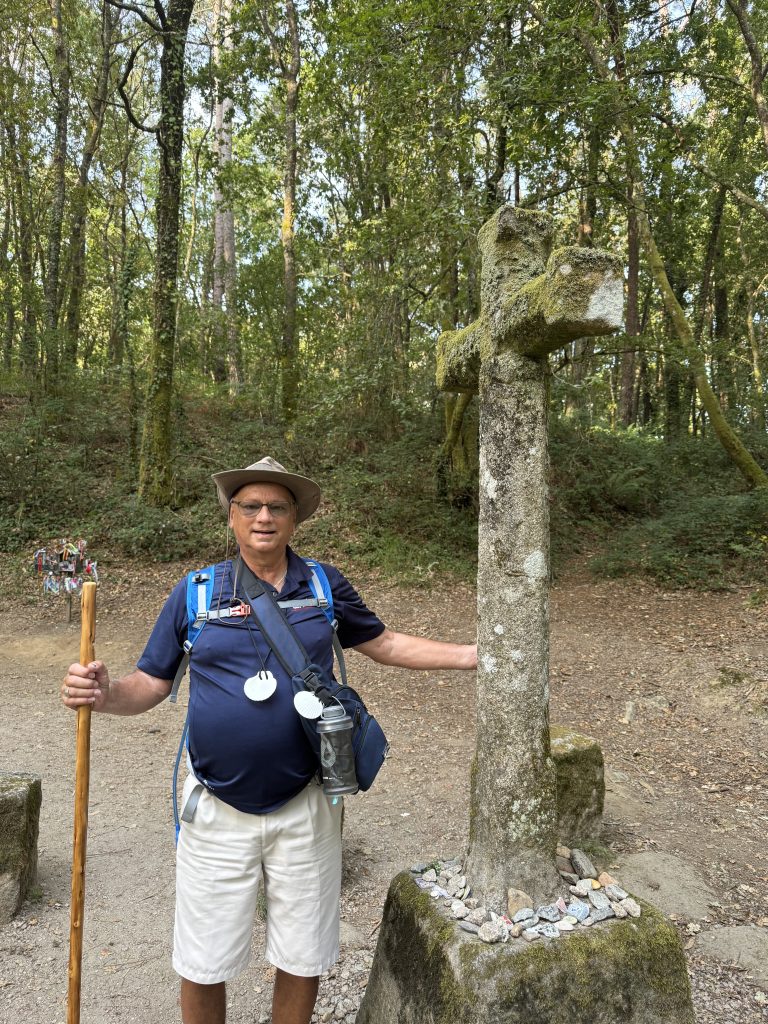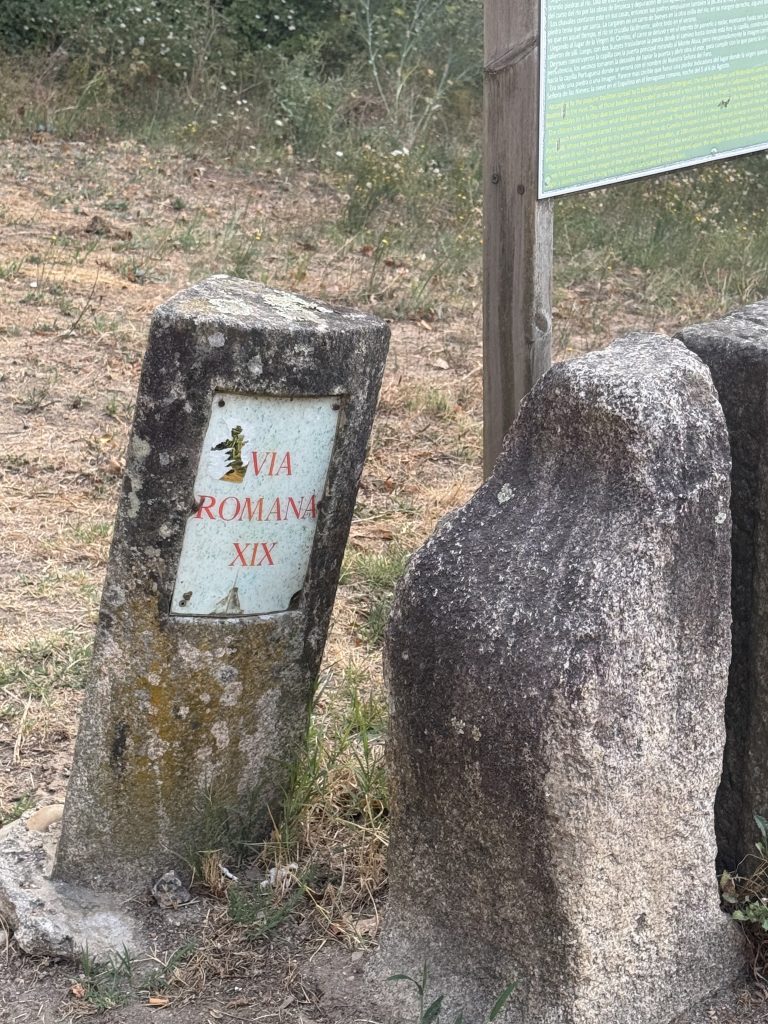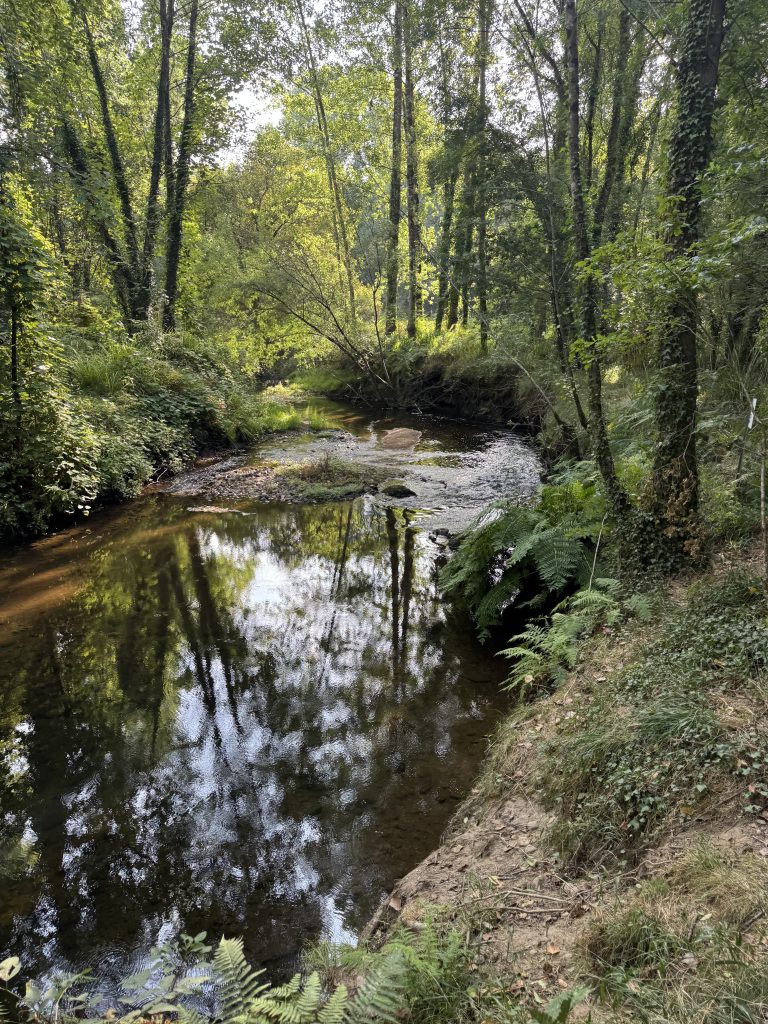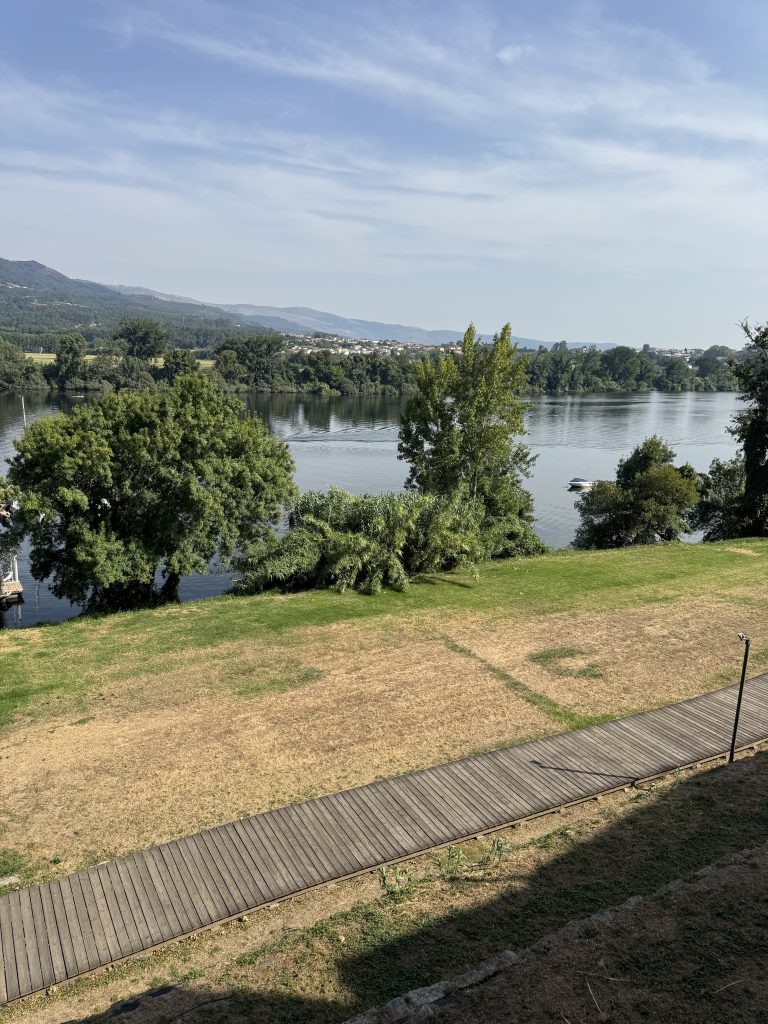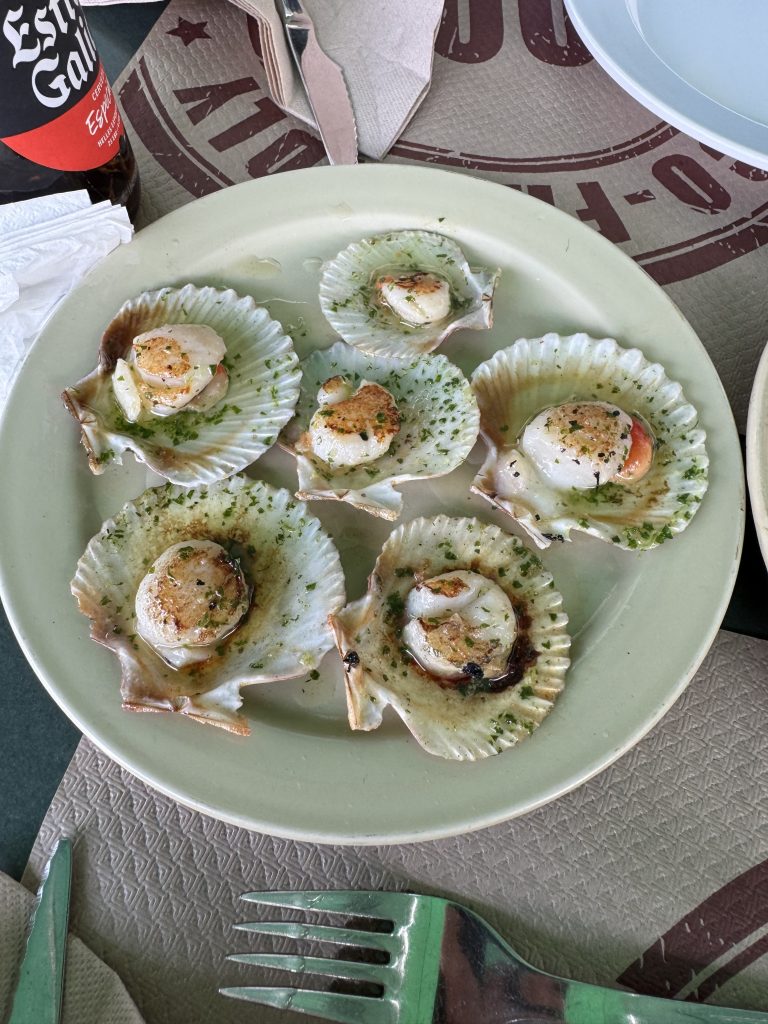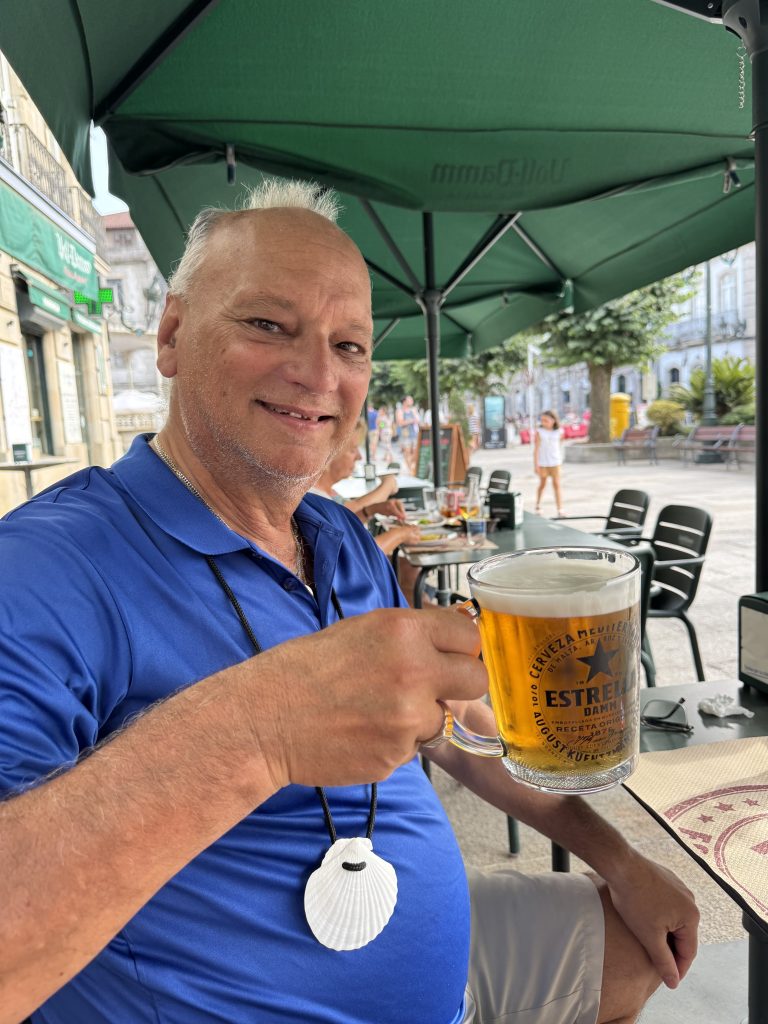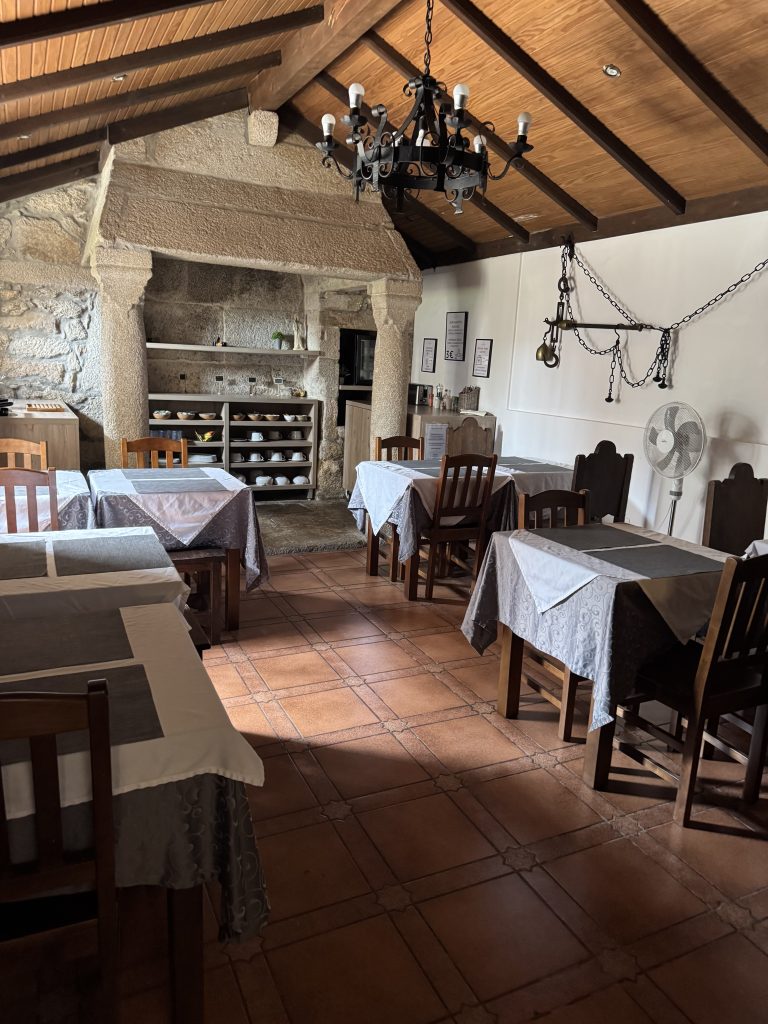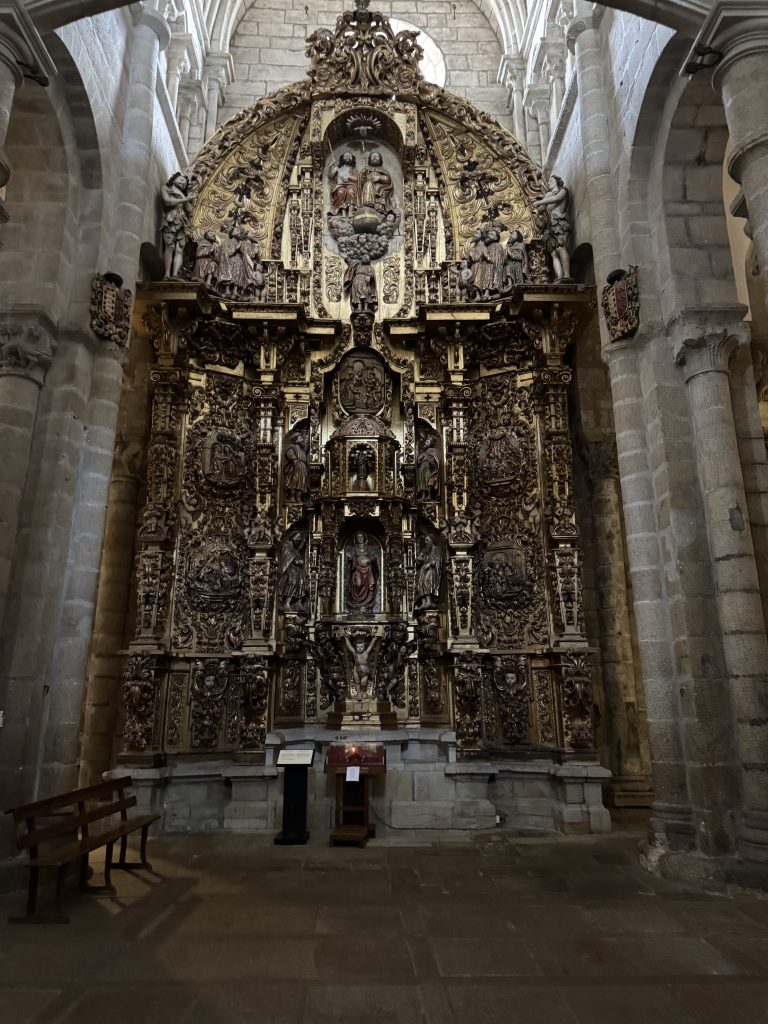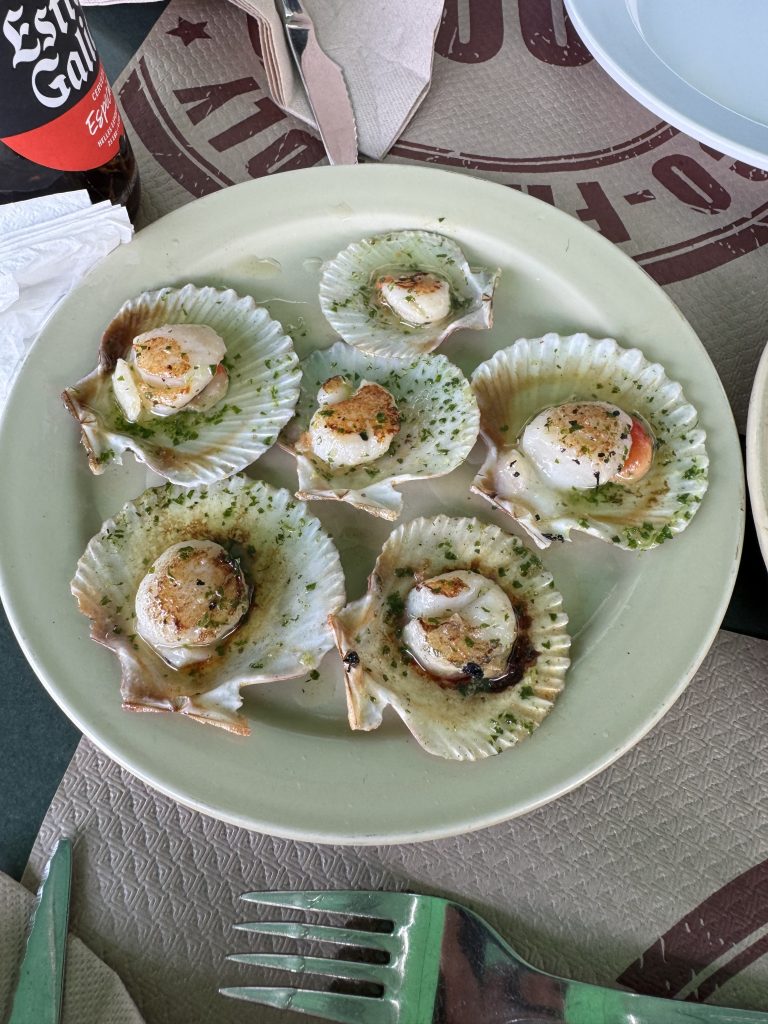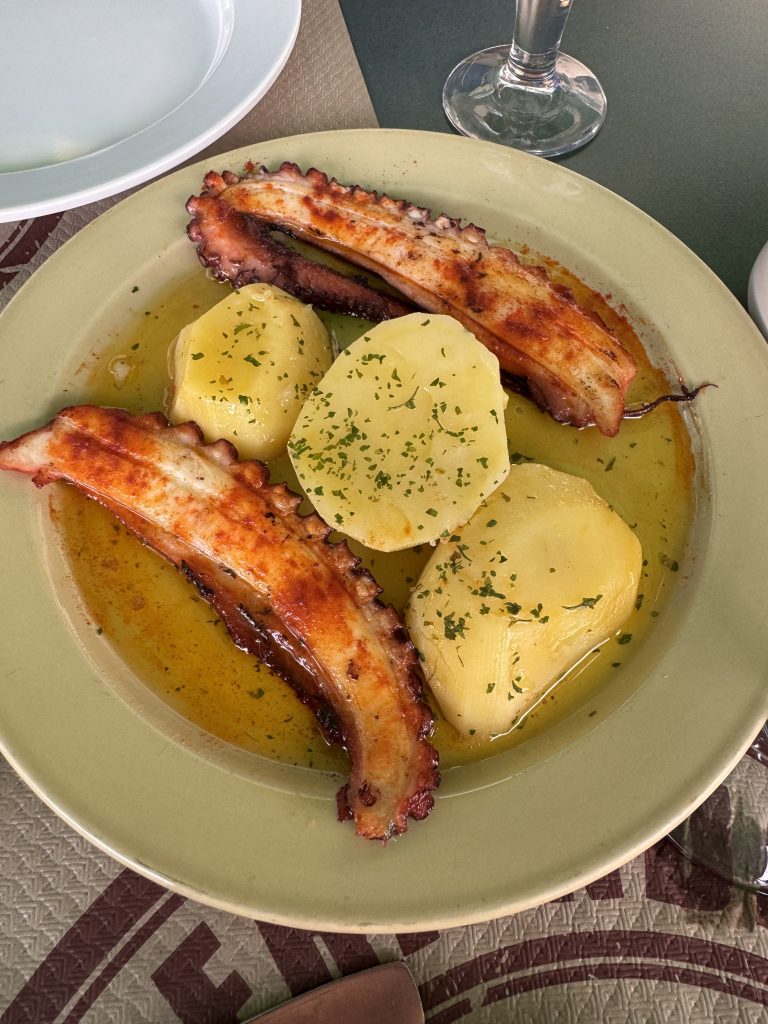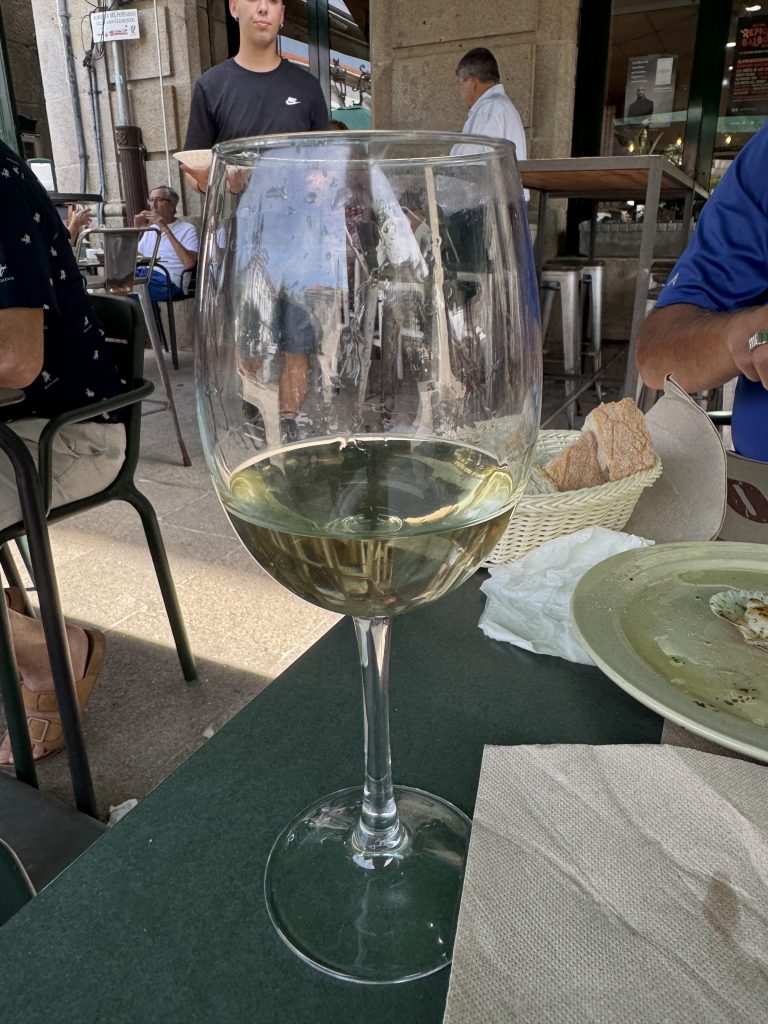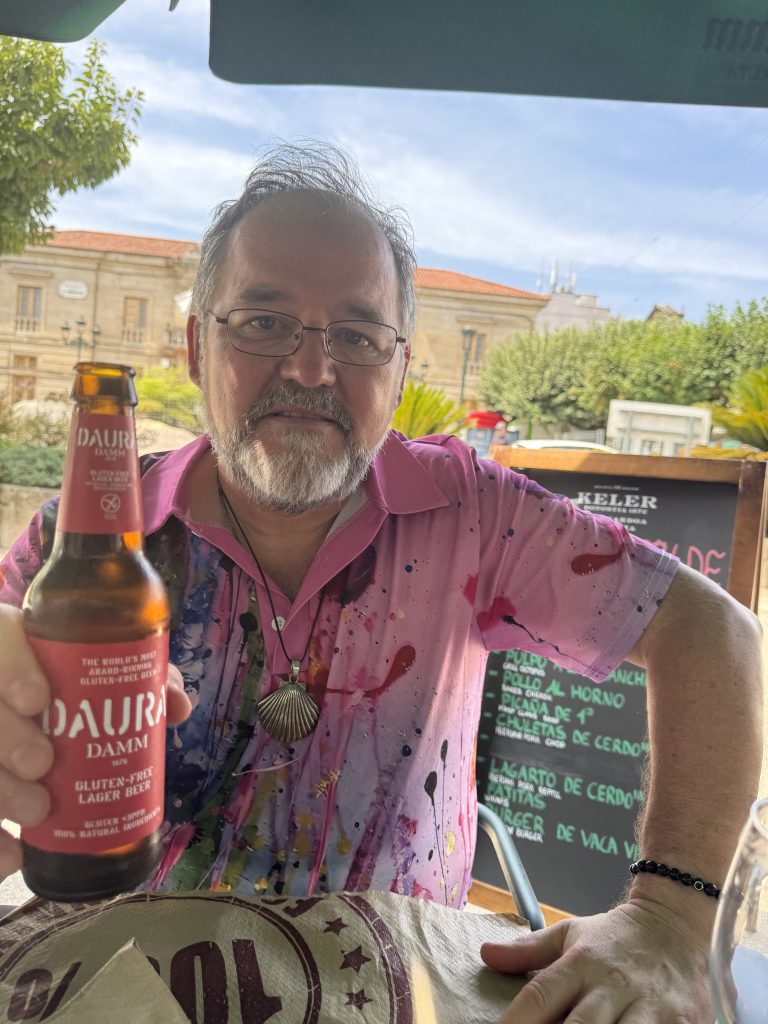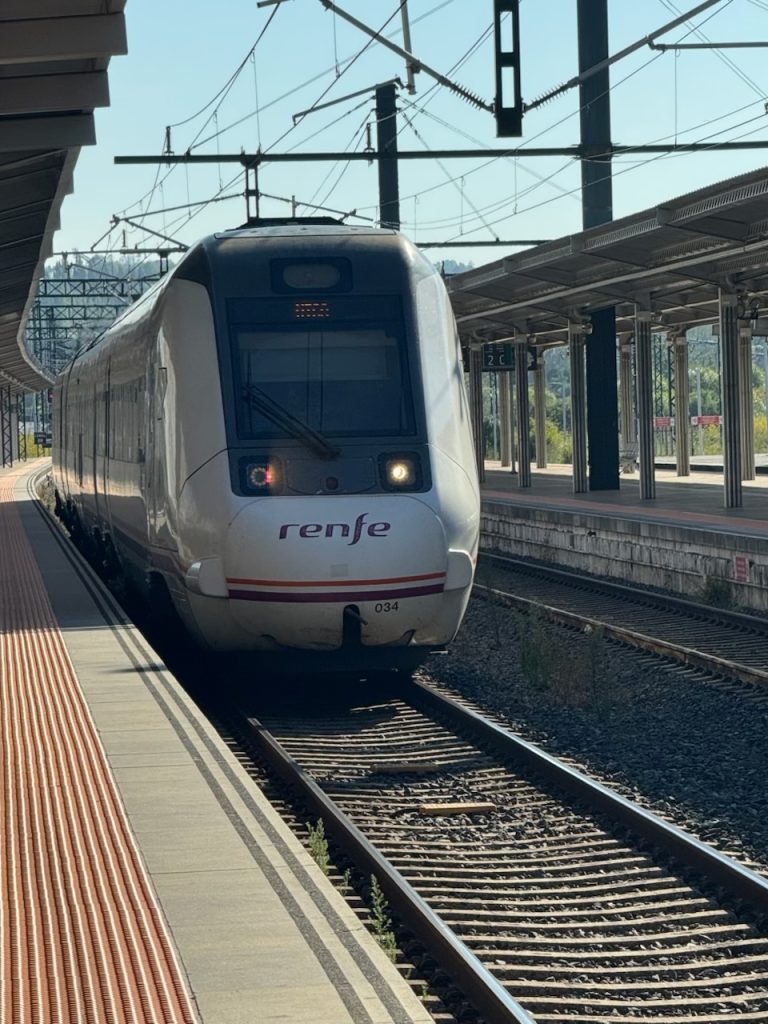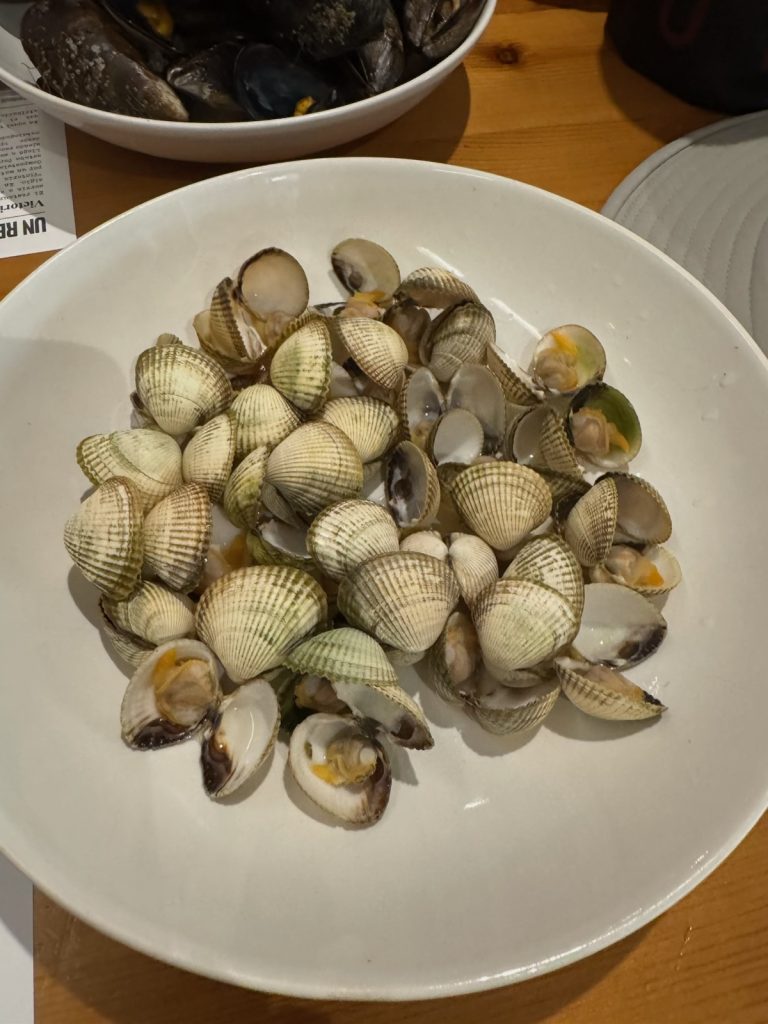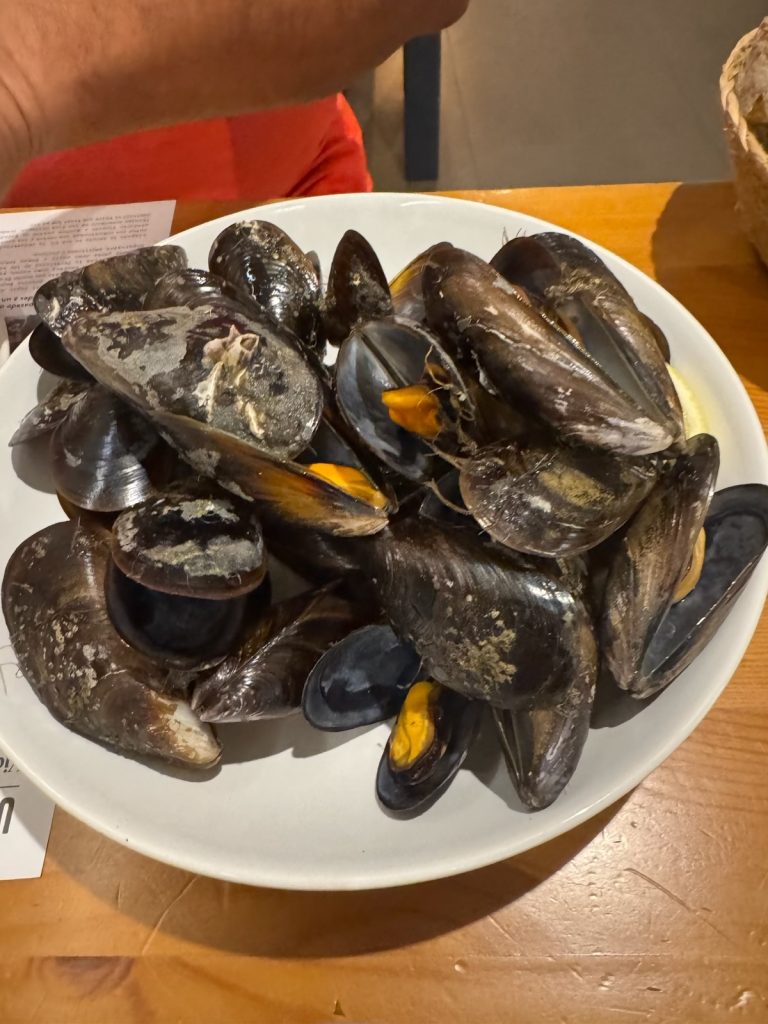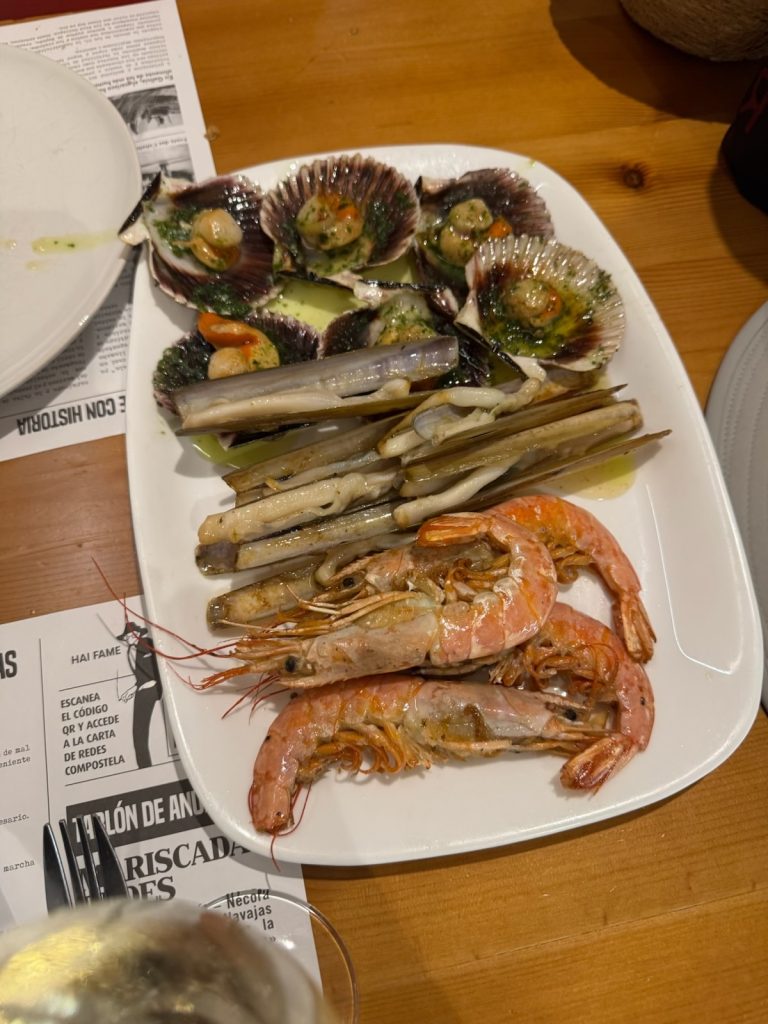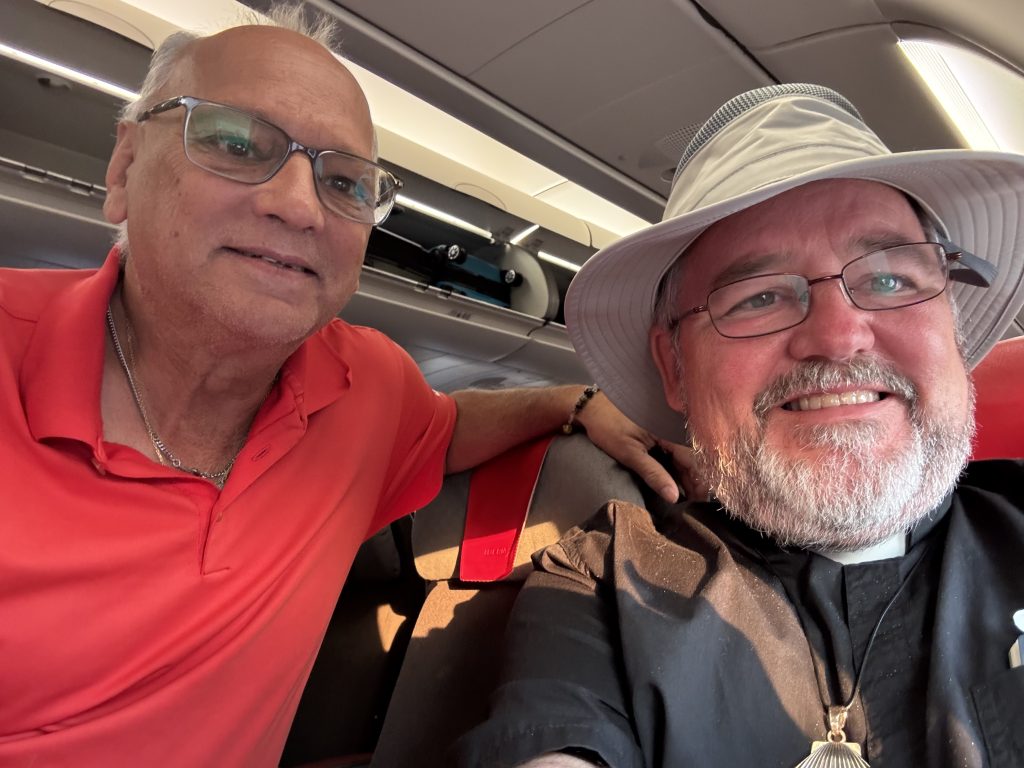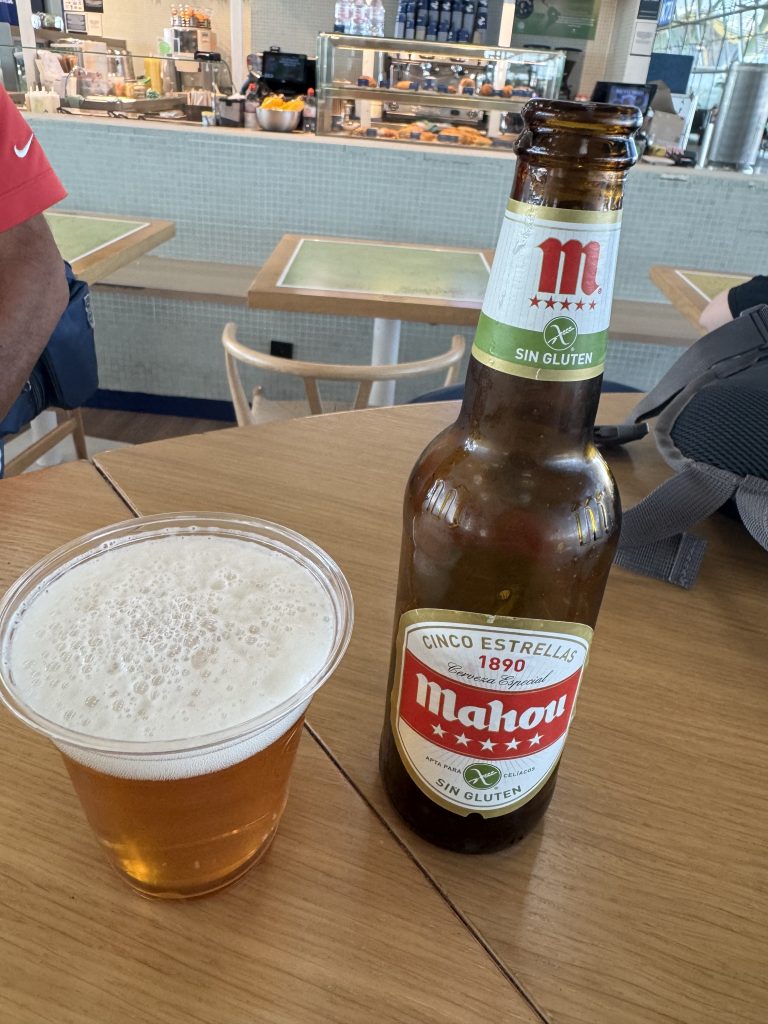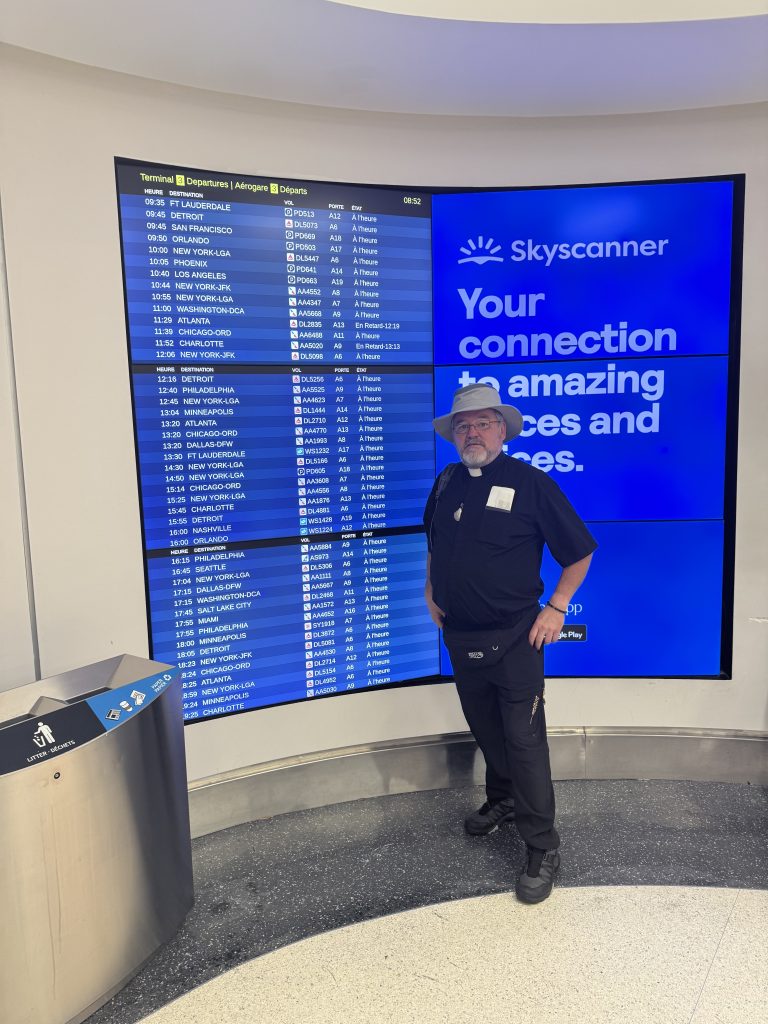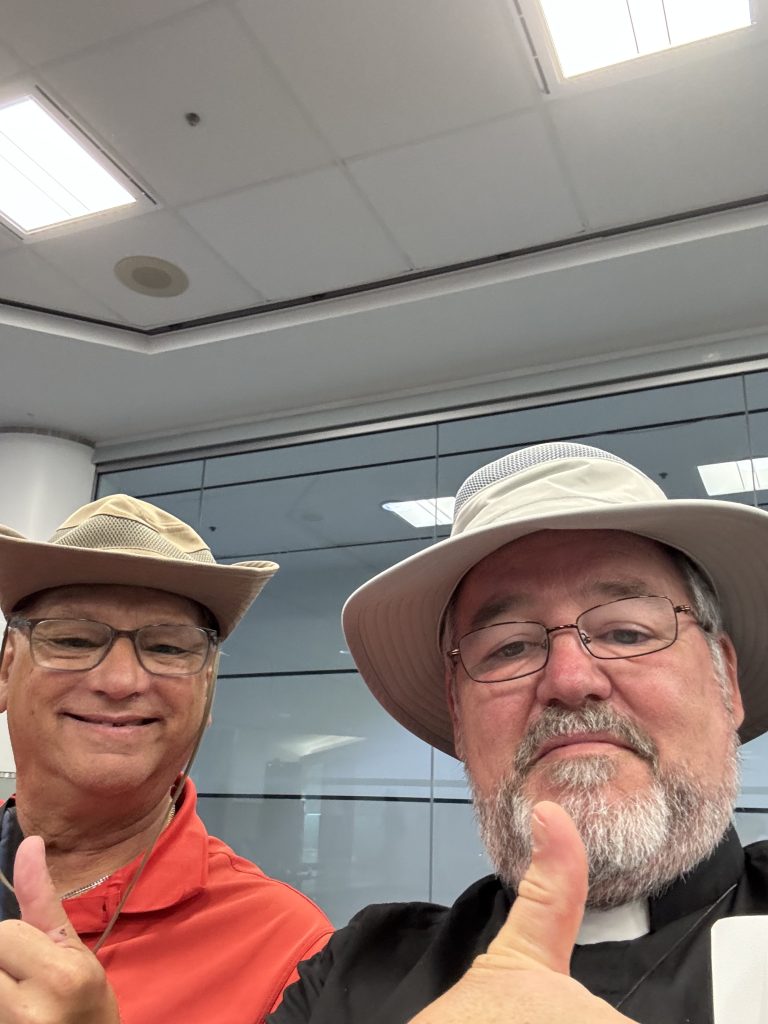Dear reader, our day began in what I like to think of as the “Camino Goldilocks Zone”—up before the sun, showered, and strategically loitering at the door of the dining room so that we could be the first ones in at 7 a.m. sharp.
The server took one look at me and, with the solemn air of a man announcing a royal decree, said: “Room 207. Sin gluten.” He then followed me into the dining room carrying what can only be described as a laundry basket full of gluten-free provisions—bread, biscuits, crackers—enough to feed a small coeliac army for a week. I, being a man of simple (and rather carnivorous) tastes, ignored most of it and set to work on the chorizo, prosciutto, salami, serrano ham, and yoghurt. His efforts were largely wasted, but I appreciated the gesture nonetheless.
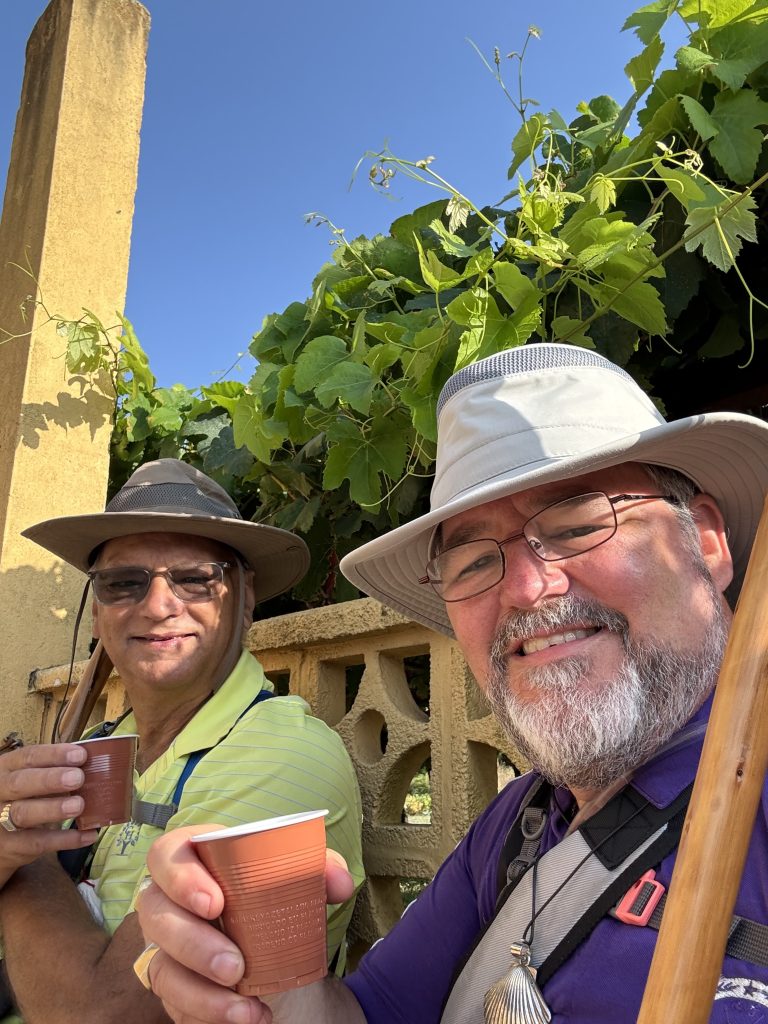
We left immediately after breakfast, well aware that today would be no stroll along a seaside promenade. We had at least 24 kilometres ahead of us, with two “provisional paths” (which, dear reader, is Camino-speak for “absolutely beautiful but adds extra work”) that would each tack on an extra kilometre. Memories of our industrial park adventure still fresh, we chose the scenic detours without hesitation. We had also been warned about “some significant climbing” today—ominous words for hips and knees of our vintage. What no one mentioned, however, was that this would also be the hottest day since we set foot in Spain.
The three factors combined—distance, altitude, and heat—created a day that was both deeply rewarding and rather like walking through an oven while wearing a backpack.
Still, grace came in many forms. As an extreme introvert, I rarely end a day speaking of “all the new friends I made.” But when one is travelling with David Smith, it is inevitable. People we’d met days before seemed to pop out of side streets and cafés just to say hello. Late in the morning, two very cheerful Italian women from Sicily approached. One, Claudia, looked straight at David and declared, “Whiskey!” She remembered him from the night before, attempting to find a decent Scotch in a Spanish pub. She was travelling with her friend Laura, and soon we were deep in conversation.
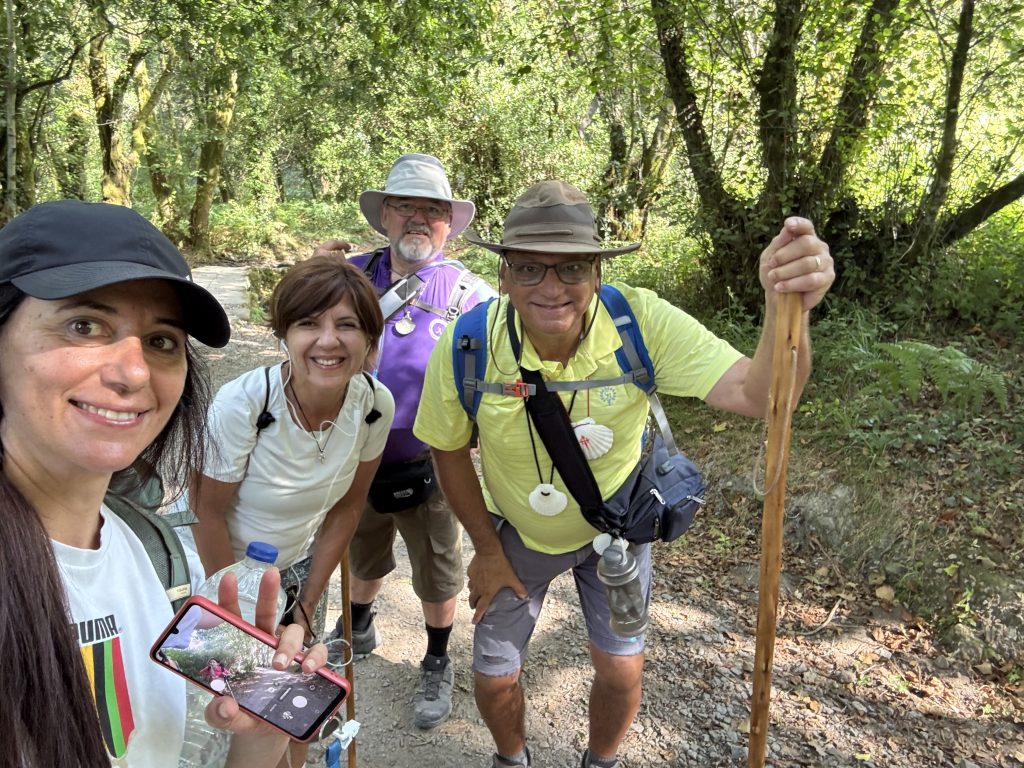
Laura was filming snippets for Instagram. David, ever the helpful accomplice, announced, “Don posts to Instagram every day.” She promptly asked for my handle, and within seconds was peering at her phone: “Reverend. You are priest.” And just like that, the conversation turned from whisky to faith—a far more satisfying topic, in my opinion. We crossed paths with them several times throughout the day, each meeting another gift of laughter and insight.
By late afternoon, however, our pace slowed to the speed of treacle in January. The heat was unrelenting. At one point, we stopped at a small pub beside the Way, where the sound of riotous laughter caught our attention. It turned out that many of the younger pilgrims had discovered the vineyard’s irrigation system and were joyfully running through it like children on the first day of summer. In the spirit of Christian solidarity—and possibly heatstroke—David soon joined them.
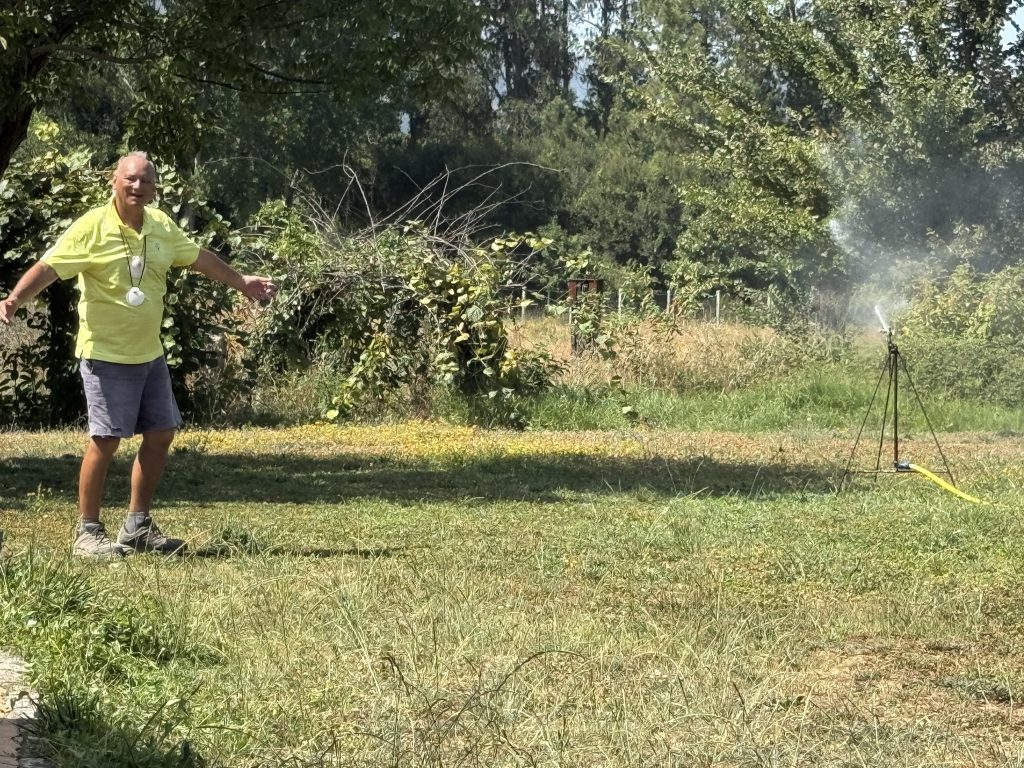
We arrived tired, hungry, and a little sun-baked, but the day had been full of prayer, companionship, and joy. On the Camino, you learn quickly that these are the true provisions for the journey.
Long before we entered the city of Caldas de Reis we encountered the sign on the highway that it was 40 km to Santiago. When we got to our hotel, the Camino Marker told us even then that we were still 46 kilometers away. Walking the camino is much different than the straight lines of highways we are used to. Perhaps that is another lesson that the Camino teaches. Life takes us on winding routes at times, and that is simply the nature of life. Just keep walking. God bless you, dear reader.
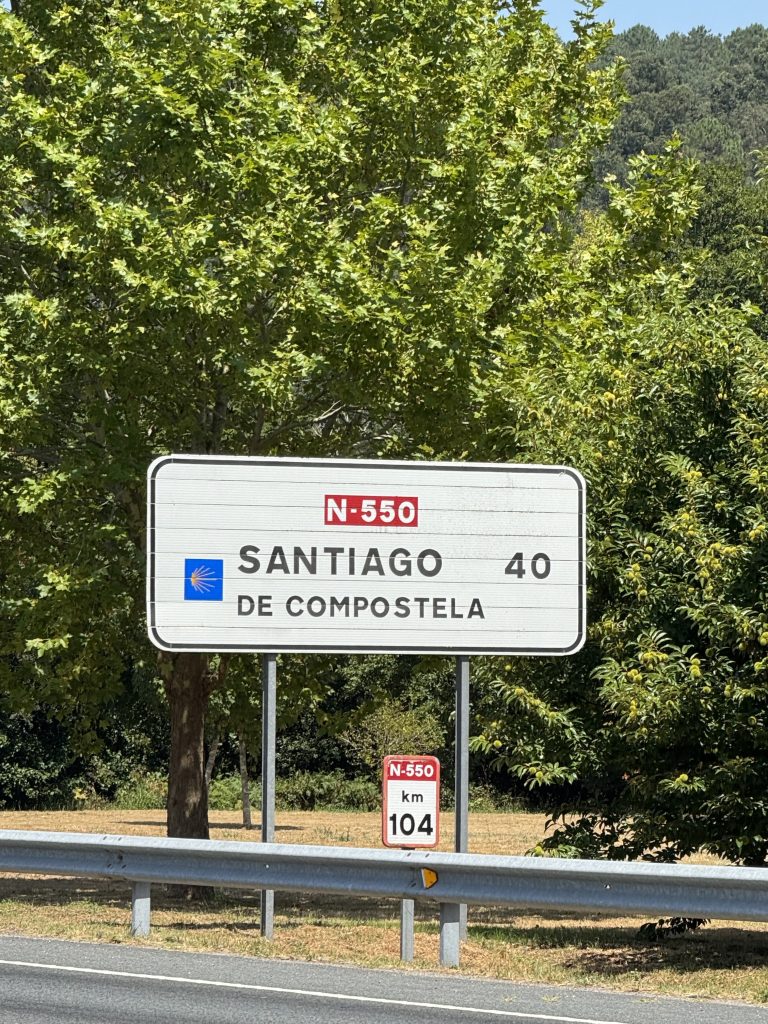
Buen Camino.
